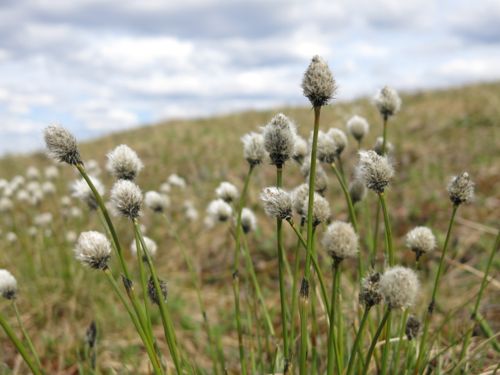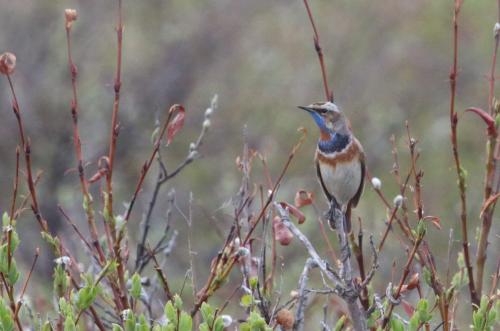Among the researchers working at Toolik and the group that shares our lab space is Team Bird from UC Davis. I had the fantastic opportunity to spend a day out in the field with Jesse Krause, Helen Chmura and Mikaela McGuigan and help locate nesting White Crowned Sparrows and Lapland Longspurs. This is a challenging proposition, as there is lots of open tundra for these ground nesters to lay eggs. Over the past few years however, Team Bird has developed a good strategy for finding nests. Subtle variations in habitat helps increase the odds, but ultimately is comes down to covering a lot of ground. We walked about 3-5 meters apart though the Dwarf Birch and Willow and watched carefully for a bird to run off or fly. We also listened intently for singing males and scanned the vegetation for activity. Playback recordings of singing males stirred up interest on a few occasions.


Part of Team Bird's research involves the relationship between the timing of nesting and reproductive success. With climate change, the phenology of plant greening, and insect activity is changing. This may impact food availability, nesting habitat, and perhaps nesting success. When these hungry nestlings hatch, it is critical that food in the form of insects, is available. The insect hatch of flies, mosquitoes, spiders, butterflies, beetles, and others, depends largely on temperature. To understand these complex ecological interactions, other groups are actively measuring plant greening, and insect activity in the immediate vicinity of the nesting areas.


Teachers should check this out. Something like this could be a great class or individual project for any school. I am still working on the idea for my school, but started to document the phenology of springtime with students using Google Docs to start a long term database of ecological events in my area. https://docs.google.com/a/aspenk12.net/spreadsheet/ccc?key=0Au53MhEE53k1dDNXbTlTRHRoN3BEZEtwU2Z6MUdiY0E&usp=drive_web#gid=0
Environmental Data Center Team. 2014. Toolik naturalist' s journal. Toolik Field Station, Institute of Arctic Biology, University of Alaska Fairbanks, Fairbanks, AK 99775.


Comments